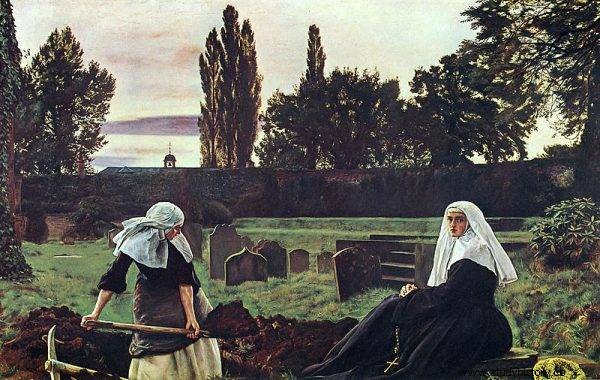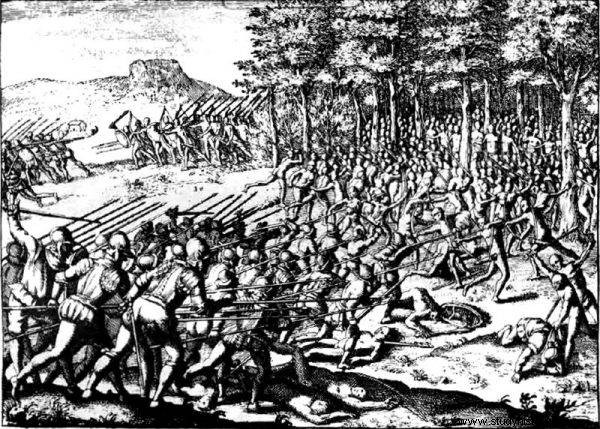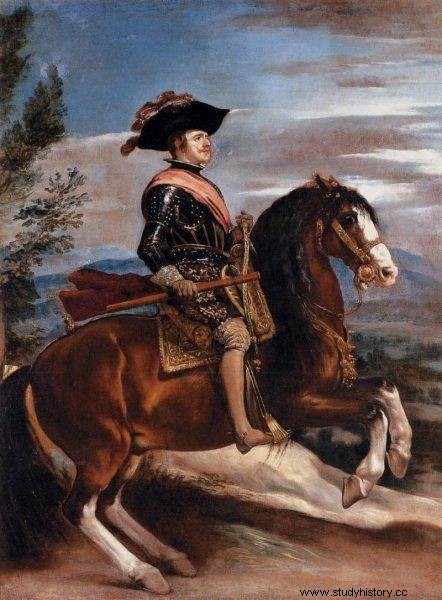A nun, conquistador, her brother's killer, participant in fighting the Indians, outlawed robber, gambler, lesbian - all these terms apply to only one person - Catalina de Erauso.
In our culture, Catalina de Erauso is a rather anonymous figure. In the Spanish-speaking part of the world, however, her life story is quite famous. She was not the only woman who took part in the Spanish conquest (others include Maria de Estrada and Inés Suárez), but she was without a doubt the most famous of them.

She murdered her brother. She was a nun, a lesbian, and a… conquistador. The amazing story of Catalina de Erauso
What makes her character even more intriguing is the fact that usually did not hide her taste for the fair sex. At a time when homosexual practices in Spain were threatened with death, the lesbian Erauso has become a very popular person there. She was received with all honors in audiences with King Philip IV and Pope Urban VIII - and won special privileges with both of them.
The Runaway Nun
Catalina de Erauso was born in 1585 in the city of San Sebastian in the north of the Iberian Peninsula. However, her father and four brothers found their calling in South America, where they took part in the slowly ending conquest.
The fate of the de Erauso women was quite different. They spent their childhood years in a convent, where they were prepared to be either an exemplary wife or a godly nun . Neither of these paths suited young Catalina, however, and just before taking her final vows, she got into a serious quarrel with another nun. This quarrel made her realize that living outside the walls of the order was not what she wanted.

The fate of the de Erauso women was quite different. They spent their childhood years in a monastery, where they were prepared either to be an exemplary wife or a godly nun.
She stole the keys to the convent gates from Mother Superior and escaped at the first opportunity. Immediately afterwards, she cut her hair short, changed into men's clothes, and from that moment on, for a large part of her life, she hid her true gender from the world.
After escaping from the convent, Catalina traveled in northern Spain for three years, pursuing a variety of activities. Finally in the spring of 1603, as a ship's boy, she joined a ship bound for the New World . It would seem that for a woman who lived behind the walls of a convent three years earlier, South America at the turn of the 16th and 17th centuries would prove to be an extremely dangerous place. Erauso, however, was made of a different clay.
G.I. Catalina
The first thing Catalina did right after arriving in Panama was to steal. Her victim was the captain of the ship on which she reached America. In the months that followed, she moved to Peru, where she got into fights several times, had romances with women, was charged with murder and was briefly imprisoned . As you can see, even a childhood spent in a convent could not turn her into a good girl.
Krewka's temperament turned out to be very useful to her soon. For a pay promise of 280 pesos, she went to Chile to take part in the battles against the militant Araucan tribe. Already at the very beginning of the military adventure, fate smiled at her. It turned out that the secretary of the province to which she was assigned was held by none other than Miguel de Erauso, Catalina's full brother.
Not only did they meet, but they spent over three years in each other's company. The snag is that Miguel de Erauso left for America when Catalina was only two years old. He couldn't have known the person he was with was his little sister. Throughout this period, Erauso has not revealed who she really is either.
When relations between the siblings deteriorated (they got into a fight), Catalina was finally sent to the front. Her garrison was stationed at Piacabi, the hottest point on the Araucan battle map. For Erauso it was a real baptism of fire. She spent five years in Piacabi and took part in the most fierce battles.

On a promise of a pay of 280 pesos, she went to Chile to take part in the battles against the militant Araucan tribe.
During one of the battles, she heroically defended the banner of her unit, for which she was awarded a promotion to lieutenant. However, Erauso's streak ended soon. As she rested from the frontline struggle, her love of gambling and brawling was once again known. One of her fights ended tragically. As a result of a mishap of events, Catalina killed ... her brother Miguel.
This event ruined her further career in the army and forced her to flee from justice. From a soldier she turned into an outlawed criminal. In the town of Piacobamba, she murdered a man once again, and she was really close to hanging on a noose. This adventure had taught her nothing - and soon she found someone who turned out to be stronger than she was.
Like a virgin
In Cuzco, Catalina got into her last fight. She was seriously injured in it and survived only thanks to the help of a clergyman who took care of her. On her bed, she confessed to him that she was not a Spanish nobleman, but a nun who had run away from the convent who has been leading an adventurous life in South America for years.
When Erauso recovered, the priest caring for her directed her straight to the bishop residing in the city. After talking to him, the news began to spread quickly about a militant nun dressed in a male outfit. A nun who, in addition to being skilled with the sword, also turned out to be ... a virgin.
Initially, the bishop did not want to fully believe Catalina's story. Consequently, he commissioned nuns from a nearby convent to investigate whether she was really a woman. The study confirmed not only this, but also the fact that she had never been with a man (which is easy to believe because - as we know today - she was a lesbian). Of course, she did not inform the bishop about her sexual preferences, but she still had to undergo some form of penance for her current lifestyle. She had to put on her habit again and spent over two years in a nearby convent. She was famous when she left him. She decided to use her five minutes and returned to Europe in 1624.
Nun in disguise
When, after twenty years of absence, Erauso returned to Spanish soil, was struck by the fact that her life story was already widely known there . In Seville, she had to stealthily sneak through the streets, as curious passersby did their best to glance at the famous warrior nun for a moment.
Her popularity certainly helped her achieve the goal that really brought her to Spain. And it was money. During her stay in Madrid, she was warmly received at the court of King Philip IV, who in his generosity awarded her a salary of 800 crowns per year.

During her stay in Madrid, she was warmly received at the court of King Philip IV, who in his generosity awarded her a salary of 800 crowns per year.
Once her financial goals were achieved, she had one more important issue to deal with. To tick off the last item on her list, however, she had to go to Rome. In the eternal city, she encountered none other than Pope Urban VIII himself. An audience with the head of the Catholic Church also went her way. The Pope officially allowed Catalina de Erauso to forever and without any consequences ... wear a male costume. For her request to be granted, however, one condition was placed on her. She would be free from all violence forever.
The Woman at the End of the World
We do not know whether Catalina de Erauso kept her word and has not harmed any human being since receiving the papal dispensation. It is known, however, that in 1630 she returned to America for good. This time, however, she went to Mexico, where she lived as Antonio de Erauso until the end of her days.
For a long time, the history of her life was the canvas of all sorts of adventurous novels, films and theatrical plays (eg the films "La Monja Alferez" from 1944 and 1987). In modern times, Catalina de Erauso began to be seen as a symbol of the struggle for female emancipation and tolerance for homosexuals.
However, apart from what she has become, it must be honestly admitted that the story of her life and transformation is truly incredible. Unlike the Maid of Orléans, this Spanish one led the life of a true adventurer. She killed, romanced, and changed being behind the safe monastic walls to fighting the Indians in the middle of the tropical jungle.
